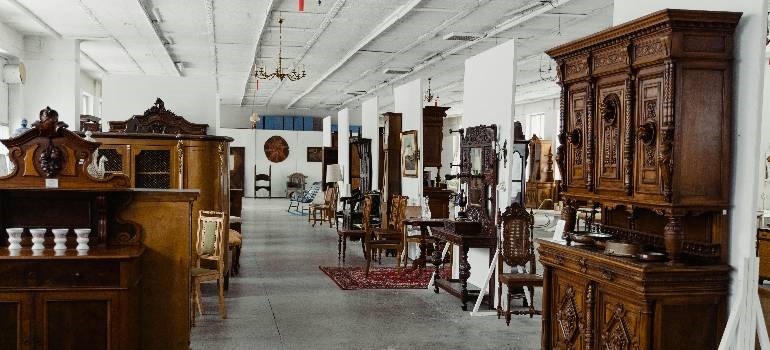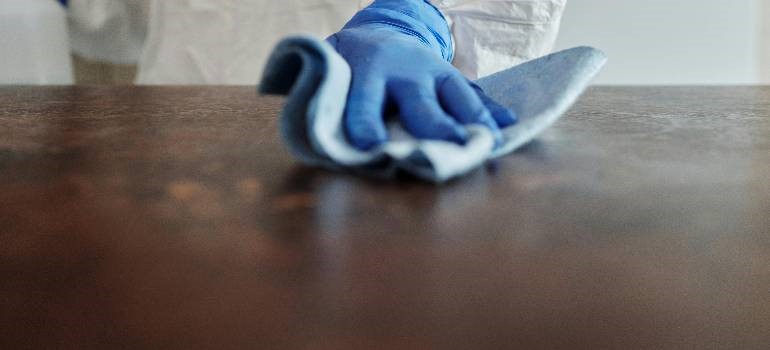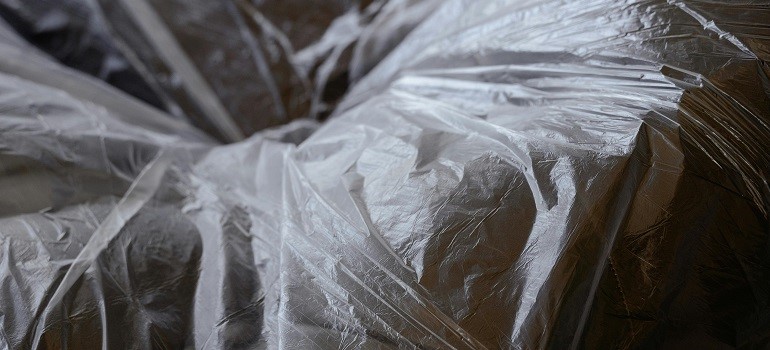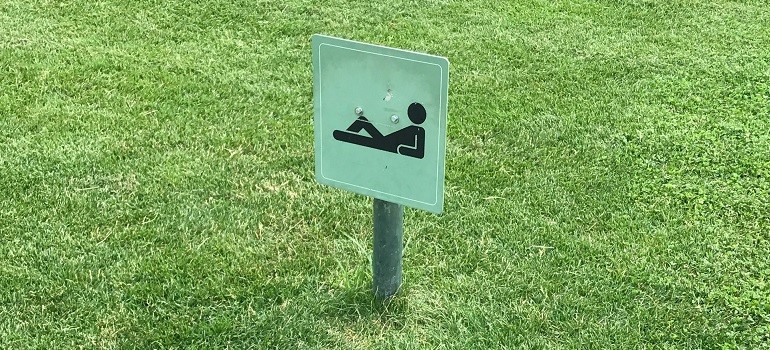Storing furniture for months or even years seems simple at first. You find a unit, drop everything off, and forget about it until you need it again. But that’s exactly how problems start. The mistakes people make when storing furniture long-term often happen before they even lock the door. Moisture, temperature changes, and bad packing materials can ruin good furniture faster than you think. Different materials—wood, leather, and fabric—each react differently to storage conditions. So planning ahead really matters. Working with trusted Bay Area moving companies can make the process easier. They help with transport, proper packing, and selecting secure storage options that fit your needs. A few smart choices now will save you stress—and money—later.
Choosing the wrong storage facility
Not all storage units are the same, and that’s where many people go wrong. A low monthly rate can look great, but the cheapest facility often lacks important features, such as:
- climate control
- security
- pest management

Over time, those missing features can cost more in repairs than you saved in rent. Before signing a contract, make sure to:
- Visit the facility.
- Look at the walls, floors, and insulation. Ask about humidity control and pest prevention.
- If you’re unsure where to start, professional Bay Area residential movers can recommend reliable storage options they’ve worked with before.
- Check access hours, hidden fees, and building conditions.
You want a space that’s clean, sealed, and well-maintained. Good ventilation and stable temperature will protect your furniture better than a discount rate ever could.
Skipping climate control in humid or cold regions
If your storage unit gets too humid, wood can swell and fabric can grow mold. If it’s too cold or dry, leather cracks and glue joints weaken. Climate control prevents all of that by keeping conditions stable year-round.
Ask the facility how they monitor temperature and humidity. Ideally, storage should stay between 55 and 80 degrees with moderate humidity. If you’re using Bay Area storage provided by reliable moving companies in the area, you have nothing to worry about. If a climate-controlled unit isn’t in your budget, use moisture absorbers and leave space for airflow. Small steps like these can protect your furniture from long-term damage.
How to prepare before moving furniture into storage
Good preparation makes every other step easier. Start by measuring your unit and planning the layout. Clean and dry your furniture, then disassemble anything large. Wrap each item in breathable materials and lift it off the floor. Label everything clearly. Schedule your move for a dry day, and bring extra padding and tools just in case.

When arranging your unit, leave pathways and space around each piece for air circulation. Don’t block vents or stack too high. Once everything is in place, take a few photos and update your inventory. That’s it—you’re done, and your furniture is safe for the long term.
Failing to clean and dry furniture before storage
Dirt, oils, and leftover moisture are silent troublemakers. They invite pests, attract mold, and slowly damage finishes. That’s why cleaning comes first—always.
- Use a mild cleaner on wood.
- Vacuum fabric upholstery
- Condition any leather.
- Let everything dry completely before wrapping.
- Metal parts benefit from a quick polish or a light coat of rust-resistant spray.
If you need help preparing furniture before storage, professional packing services Bay Area companies offer can handle the cleaning, wrapping, and packing for you. Waiting an extra day for furniture to dry properly—or letting experts do it—beats finding mold later. Proper cleaning is a simple but essential step many people skip.
Using the wrong packing materials
Plastic wrap is one of the biggest offenders when it comes to furniture storage. It seems protective, but it actually traps moisture and ruins finishes. Instead, use breathable covers like cotton sheets, canvas, or moving blankets.

Many people assume that any household material will do the job, but that’s not the case. Some materials seem convenient or affordable yet cause serious damage over time. Knowing what not to use is just as important as choosing the right supplies. Here are some common materials that don’t belong in furniture storage:
- Plastic wrap – traps moisture, leading to mildew, warping, and sticky residue on finishes.
- Newspaper – the ink can transfer to fabric and wood surfaces, leaving stains that never fade.
- Bubble wrap directly on wood or leather – traps condensation; plastic bubbles can leave marks or imprints.
- Garbage bags – made of non-breathable plastic, they create humidity pockets and encourage mold growth.
- Cardboard boxes for heavy or upholstered pieces – absorb moisture easily and become breeding grounds for pests.
- Tape directly on surfaces – adhesives strip varnish and leave hard-to-remove residue.
- Old blankets or comforters – attract dust mites and hold moisture unless freshly washed and completely dry.
Wrap glass or metal pieces separately, and never seal furniture too tightly. A little airflow helps prevent condensation. Label everything clearly so you don’t have to unwrap items later. If you’re short on time or unsure about proper techniques, furniture movers in Bay Area offer wrapping and packing solutions designed to protect items long-term. The right materials and methods make all the difference when you want your furniture to stay in perfect condition.
Transportation mistakes people make when storing furniture long-term
Most damage happens before furniture even gets to the storage unit. During loading and unloading, careless handling can leave scratches, broken legs, or loose joints. Use proper equipment—sliders, straps, and dollies—to move heavy items. Disassemble large pieces when possible and store the hardware in labeled bags. Pad corners with moving blankets and secure everything inside the truck.

Once inside the unit, position your furniture thoughtfully. Don’t block airflow or stack items that could collapse under weight. The goal is to keep every piece stable and supported until you need it again.
Storing furniture directly on the floor
Concrete floors can hold a surprising amount of moisture, especially in cooler weather. That moisture rises and seeps into wood or fabric, leaving dark stains or mold patches. Raise your furniture off the ground using pallets, risers, or plastic boards. Add a vapor barrier or tarp if the floor feels cold. Avoid pushing anything against walls or corners—those spots trap moisture.
If you’re using full service moving services, ask your movers to handle elevation during placement. They’ll ensure everything stays dry and properly spaced, saving you time and future repairs.
Ignoring pest prevention
Storage units aren’t immune to pests. Even the smallest gap under a door can let in insects, rodents, or other unwelcome guests. Once they’re inside, they can chew through fabric, nest in cushions, and leave behind droppings that stain and smell. It’s not just unpleasant—it’s expensive to fix.

Before putting anything into storage, take time to inspect every piece carefully. Open drawers, lift cushions, and clean out hidden spaces. Food crumbs, pet hair, or even scented cleaning products can attract pests. Avoid using cardboard boxes directly on the floor since they absorb moisture and invite nesting. Sturdy plastic bins with tight lids are always the safer choice. For extra protection, consider using natural repellents that don’t harm furniture. Here’s what works best:
- Cedar blocks or chips – naturally repel moths and some insects while leaving a clean scent.
- Peppermint oil – a few drops on cotton balls placed around corners keep rodents away.
- Mothballs or sachets – effective for fabrics but should never touch wood or upholstery directly.
- Diatomaceous earth – a natural powder you can sprinkle along edges or under pallets to deter crawling insects.
- Sealed storage bags for cushions or textiles – keep pests from burrowing into soft materials.
Avoid common mistakes people make when storing furniture long-term
Also, keep your storage space tidy. Don’t stack random items against walls or pile up unused fabric where pests can hide. Sweeping the unit occasionally and wiping surfaces removes dust and scent trails. If you’re working with local movers in San Francisco Bay Area, ask them to help seal and organize your furniture properly. They can use protective covers, elevate pieces off the ground, and block small entry points during setup.
Pest prevention isn’t something to handle once—it’s ongoing. Each visit, check for droppings, small holes, or gnaw marks. A clean, organized, and well-sealed unit will keep your furniture pest-free for as long as it’s stored.
Overcrowding the storage unit
It’s tempting to cram as much as possible into a single unit. But overcrowding creates more problems than it solves. Packed furniture can’t breathe, and pressure from other pieces leaves dents and warps. When loading your unit, think of it as arranging a small room. Keep walkways open, stack lighter items on top, and avoid leaning things against each other for long periods.
For valuable or fragile items like sculptures or framed artwork, consider art movers in San Francisco. They use proper handling techniques and know how to maximize space safely without risking damage.
Forgetting to take inventory
Months or years down the line, you’ll forget exactly what you stored. That’s why an inventory list is so helpful.
- Take photos of every piece before storing it.
- Write down what’s in the unit, including descriptions and estimated values.
- Label items with matching tags so you can identify them without unwrapping everything.
- Keep your list in a safe place—on your phone or in the cloud works fine.
When it’s time to move again or make an insurance claim, you’ll be glad you have detailed records.

Neglecting insurance coverage
Many people assume their regular insurance covers stored items—but that’s rarely true. Most homeowner and renter policies don’t include off-site storage. Ask your insurance provider if you can add coverage for stored belongings. If not, see if the storage facility offers its own plan. Read the fine print carefully; some policies only cover damage from specific causes.
Insurance might feel like an unnecessary expense, but replacing an entire set of furniture costs far more. Think of it as protection for both your investment and your peace of mind.
Not checking on stored furniture regularly
Out of sight shouldn’t mean out of mind. Long-term storage still needs regular check-ups. Visit your unit every couple of months. Look for leaks, damp spots, or pest activity. Lift covers and check surfaces for mold or discoloration. A small flashlight helps you see into corners.
If you can’t visit often, ask someone you trust to stop by. A quick inspection can prevent major issues later. You can even place a small humidity monitor inside and check readings remotely. Regular visits keep small problems from becoming expensive surprises.
Cost and duration of long-term furniture storage
Storage isn’t just about space—it’s also about cost and time. Climate-controlled units cost more each month, but they prevent expensive damage over the long run. Estimate how long you’ll need storage. For anything longer than a year, check the unit regularly and refresh insurance coverage. Ask about discounts for long-term contracts or prepaying several months in advance.

Consider the total value of your furniture compared to the ongoing cost of storage. For sentimental or high-quality pieces, long-term care makes sense. But for older or low-value items, donating or selling might be smarter. Thoughtful planning saves both space and money.
Avoid common mistakes people make when storing furniture long-term for better results
Avoiding the mistakes people make when storing furniture long-term doesn’t take much—just awareness and a bit of care. Cleaning, proper packing, regular check-ups, and the right environment protect your furniture for years. You don’t need fancy equipment or endless effort—just a plan. Think about climate, space, and how long you’ll store your items. Make small adjustments that keep your furniture safe and ready for your next move. If you treat storage as part of the moving process, not an afterthought, your furniture will last beautifully. A little time spent now saves a lot of regret later.
Tags
Subscribe to Upline Moving's Blog










